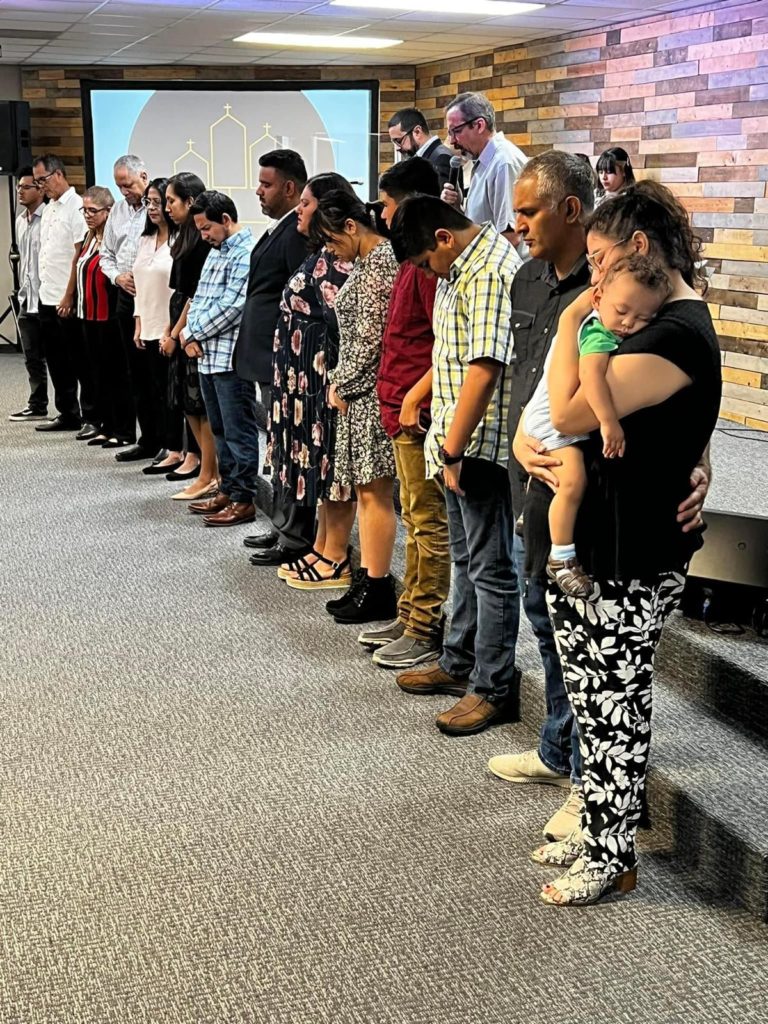PUERTO RICO—Mormon country. Crime-ridden neighborhoods blocks from the White House. The Great Plains of Oklahoma. The palm tree-lined shores of Puerto Rico.
Hispanic church planters across North America are being equipped with tools and experience to reach the continent’s fastest-growing ethnic demographic in their own contexts and using their heart language.
And these planters’ training extends well beyond the classroom, to the streets and neighborhoods of the communities they intend to reach.
“They have witnessed the needs of drunks, xenophobia against the undocumented, the discomfort of living in a place where they speak another language and the tyranny of working 60 or more hours a week,” said Alejandro Molero, who leads one such residency at Iglesia Bautista Sublime Gracia in Washington, D.C.
Two blocks from the White House, the Columbia Heights neighborhood is marked by its diversity, violence, gang fights and homelessness. It is also home to underpaid and overworked Hispanics who work two to three jobs to make ends meet while keeping their families safe.
And while Hispanic churches exist in the area, “None preach the gospel of Jesus Christ based on the Word of God,” Molero explained.
Through church planting residencies, residents have learned to share the hope of the gospel with the community in word and in deed.
Send Network’s Spanish-language residencies train planters to reach Hispanics beyond simply speaking the language. Church planters come out of the residencies ready to fully engage culturally and meet the needs Hispanics face in varying contexts.
“Residents have learned to understand the dynamics of a community by going out into the streets instead of staying locked up in the church,” Molero said.
The residents also deliver food, help families move, visit the sick, accompany people to their court dates, assist friends with immigration attorneys — so that their friends see and understand the love of Christ.
“They have learned that sharing the gospel requires more than just handing out a tract on the street or sharing their testimony in a gathering of five,” Molero said. “They have learned to intentionally share the gospel by developing genuine relationships that point toward soul salvation without ignoring the rest of the social, economic, family, moral, legal and academic issues.”
Send Network’s Spanish-language residency program lasts 17 weeks, during which residents take courses covering calling, character, discipline and church life, among others.
The model works just as well in the U.S. capital city as it does in the Caribbean.
The residency model is meant to be hosted by and developed in the context of a local church, says Xavier Torrado, Send Puerto Rico’s associate director, who also serves as the director of residencies hosted by churches on the island.
In the last five years, over 70 percent of churches planted by residency planters have passed the three-year mark since being planted, said Torrado.
Developing a Spanish-language residency specific to the planter’s context is important.
“We contextualize the curriculum and the mission,” Torrado said. “The residency structure in Washington, D.C., is the same as the one in Puerto Rico, but the context differs and so each residency looks different.”
That holds true in the arid western United States, at a residency hosted by Iglesia Bautista Sola Gracia in Utah.
With its high rate of teen suicide, Utah also ranks as the second-highest state in pornography usage and third in the use of antidepressants.
There is also a lot of false religion, adds Leonardo Lopez, pastor of Sola Gracia.
Utah planters in a Send Network residency learn how to reach the Hispanics in their area in part by learning the history of the Church of Jesus Christ of Latter-day Saints, then go out into the community to build relationships, participate in community activities and present the gospel.
Residency directors in the different locations also point to a positive shift in churches’ lives since they began hosting residencies.
“The church took on the challenge and learned to welcome the residents — to love them and intentionally train them,” shared Pastor Julio Crespo, who directs the Oklahoma City-based Send Network residency at Iglesia Bautista Central.
“Now, the church expects to form and send the planters out,” Crespo said.
The church keeps up with planters’ progress and success after launching from the residency.
“We celebrate when the residents return or hear news about the church they planted,” Crespo said.
As a result of this intentional engagement, churches develop a greater desire to transition from a regular or ‘normal’ church to a missional church, Lopez observes.
“The residency here has increased awareness and the correct ways to do missionary work — planting new churches,” he said. “It has served as a spiritual and evangelistic engine within our church and community.”
The residents not only attend the church; they become part of it.
“They have prayed, studied in several houses, visited, eaten and even cried with our families,” said Molero, the D.C.-based planter. “Amid all this, we learned we must send our best members to plant new churches in places where people haven’t heard the name of Jesus.”
That sending does not come without sacrifice, Molero indicated.
“Although it means some goodbye tears, the joy of seeing others exalt the Lord dispels any sadness that wants to cloud our hearts,” Molero said.
Pastors who wish to host a residency should contact Félix Cabrera, senior director of Send Network Español, at [email protected].
Published August 10, 2022
